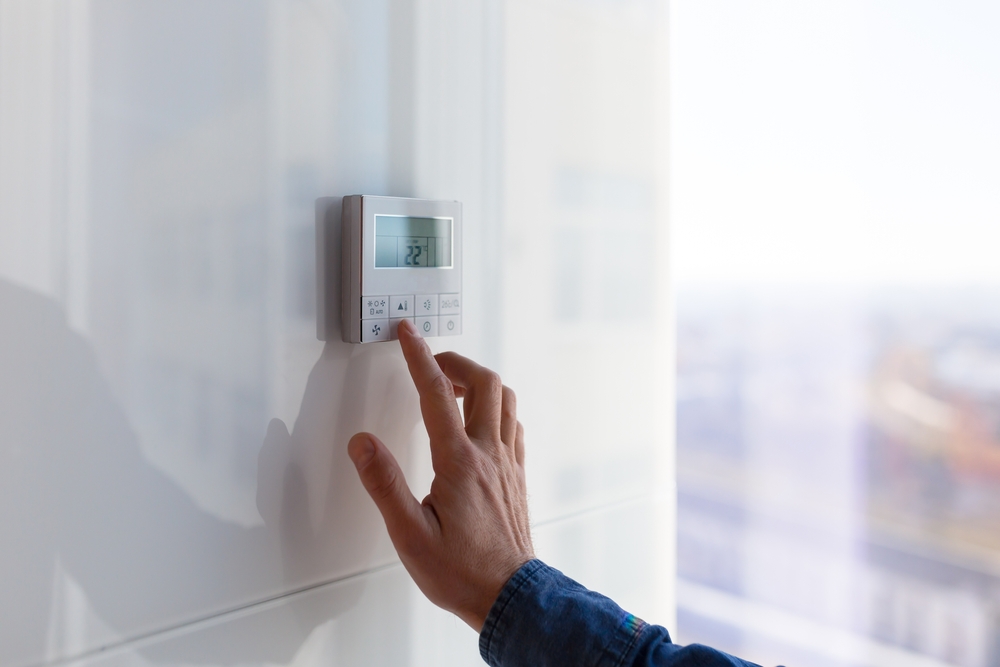
Understanding Your Thermostat: Tips for Optimal Heating
November 11, 2024 4:34 pm Leave your thoughtsWith the colder months upon us, many of us are looking to optimize our heating settings for maximum comfort and energy efficiency. A thermostat may seem simple, but it plays a crucial role in managing both our comfort and energy bills. Here’s a guide to understanding your thermostat, with practical tips and recommended settings to keep you warm without breaking the bank.
How Thermostats Work: A Quick Overview
Before diving into thermostat tips for optimal comfort, let’s take a closer look at how thermostats function. In essence, a thermostat is a device that controls your heating (and cooling) system to maintain a set temperature. Once the ambient temperature reaches the target you’ve set, the thermostat signals the heating system to stop. When the temperature drops below that threshold, it signals the system to kick in again.
There are three main types of thermostats:
- Manual thermostats: Basic and straightforward, requiring you to adjust settings manually.
- Programmable thermostats: Allow you to set schedules to automatically adjust the temperature at different times of the day.
- Smart thermostats: Connect to Wi-Fi, allowing for remote control via smartphone apps. Many models even use AI to learn your habits and adjust temperatures accordingly.
Each type has its own benefits, but all require a basic understanding to maximize comfort and savings.
Why Optimizing Thermostat Settings Matters
Heating and cooling account for nearly half of the energy used in a typical home, so setting your thermostat optimally can save you a substantial amount. According to the U.S. Department of Energy, setting your thermostat back 7-10 degrees Fahrenheit for eight hours a day can save you up to 10% per year on heating and cooling.
Moreover, achieving the right settings for your thermostat helps avoid the discomfort of overly warm or chilly environments. By following some simple guidelines, you can strike the right balance between comfort and energy efficiency.
Recommended Thermostat Settings for Winter Comfort
Daytime Settings
When you’re at home during the day, a setting of around 68 degrees Fahrenheit is widely recommended. This temperature balances warmth and energy efficiency. If you find this a bit cool, layering up can help, especially when combined with cozy blankets and rugs.
For people who prefer a warmer indoor environment, adjusting the thermostat up a degree or two is fine, but each additional degree raises energy usage by approximately 3%.
Nighttime Settings
Lowering your thermostat setting at night can help you save energy while you sleep. The recommended thermostat setting for nighttime is between 60-62 degrees Fahrenheit. Cooler temperatures are conducive to better sleep, and adding an extra blanket to your bed can keep you comfortable.
Lowering the temperature at night not only reduces your energy bill but also allows your heating system to rest, extending its lifespan. For those with programmable or smart thermostats, set the temperature to automatically adjust each night and rise again just before you wake up.
Settings When You’re Away
If you’re planning to be out of the house for an extended period, lowering your thermostat by 7-10 degrees can save energy. For most people, setting it to 55 degrees Fahrenheit while away ensures pipes won’t freeze, while also saving on energy costs.
A programmable thermostat makes this easy, automatically lowering the temperature when you leave and raising it again shortly before you return. If you have a smart thermostat, you can make these adjustments from your phone.
Best Practices for Using Your Thermostat Efficiently
Understanding some best practices can help you make the most of your thermostat while keeping energy usage in check. Here are a few essential thermostat tips for optimal comfort and efficiency.
Avoid Extreme Temperature Adjustments
It’s tempting to crank the thermostat way up when you’re cold, but doing so can waste energy and create uneven heating. Most heating systems work at a constant rate, so setting the thermostat to 80 degrees won’t heat your home any faster. Instead, adjust your thermostat gradually to avoid overworking your system and creating hot and cold spots.
Utilize Thermostat Programming
If you have a programmable thermostat, take advantage of its scheduling capabilities. Set specific times for temperature adjustments, like lowering it at night or when you’re out of the house. A well-programmed thermostat can make these changes seamlessly, enhancing comfort while minimizing energy consumption.
For instance, set it to 68 degrees from 7 a.m. to 10 p.m., then drop it to 60 degrees from 10 p.m. to 6 a.m. Experiment with different schedules based on your lifestyle, and adjust as needed for maximum comfort.
Zone Heating: Focusing on Key Areas
If your home has a zoned heating system, you can target specific areas rather than heating the entire house. This is especially helpful if you spend most of your time in certain rooms. By lowering temperatures in less-used areas, you reduce overall heating costs without sacrificing comfort in your main living spaces.
Maintenance Matters: Keep Your System Running Smoothly
Routine maintenance of your heating system and thermostat is essential for efficiency. Change furnace filters regularly, as clogged filters can impede airflow, making your system work harder. Clean the thermostat to remove any dust or debris, and if you have a smart thermostat, make sure it’s updated for optimal functionality.
Scheduling an annual maintenance check with an HVAC professional can also help catch issues before they become costly repairs, ensuring your system runs smoothly all winter long.
Additional Tips for Thermostat Comfort and Efficiency
Use Sunlight to Your Advantage
During the day, take advantage of natural sunlight to help warm your home. Open curtains on south-facing windows to let the sun in, and close them at night to retain heat. This passive solar heating method works well to supplement your thermostat settings and adds a bit of warmth without extra cost.
Consider Humidity Levels
Indoor humidity plays a significant role in perceived warmth. Dry air can make a home feel cooler, even at the same temperature. A humidity level of around 30-50% is ideal for winter comfort. Use a humidifier if needed to maintain this range, as it will help you feel warmer without increasing the thermostat setting.
Invest in a Smart Thermostat for Greater Control
If you’re looking to take thermostat control to the next level, consider a smart thermostat. These devices offer features like remote control, learning capabilities, and energy reports that can help you fine-tune your settings and habits. Many smart thermostats can automatically adjust to your patterns, and some even have motion sensors to detect when you’re home or away, saving you energy effortlessly.
Common Thermostat Mistakes to Avoid
Constantly Changing the Settings
Frequently adjusting your thermostat can lead to inefficiency, as it forces your heating system to turn on and off more than necessary. Instead, set a schedule that fits your routine and resist the urge to change it frequently.
Forgetting to Lower the Temperature When Away
Many people forget to adjust their thermostat when they leave, especially if they don’t have a programmable or smart model. This oversight can lead to higher energy bills. Consider placing a reminder by the door or setting your thermostat to make automatic adjustments.
Ignoring Your Thermostat’s Location
The placement of your thermostat affects its accuracy. If it’s in direct sunlight or near a drafty window, it may not read temperatures accurately, leading to inefficient heating. Make sure your thermostat is in a central location, away from extreme temperature influences.
Wrapping Up: Comfortable and Cost-Effective Heating
By following these thermostat tips for optimal comfort, you can enjoy a warm, cozy home while saving on energy costs. Setting the thermostat correctly, programming it around your schedule, and making use of smart technologies are all effective ways to ensure a comfortable and efficient winter season.
Remember that the right thermostat settings don’t just keep you warm—they also protect your wallet. With a little planning, you can optimize your thermostat to enjoy both comfort and savings all winter long.
Need HVAC Services in Woodbine, KS?
Family- and locally owned and operated since 1996, we have built a reputation for delivering excellent workmanship, dependability, and professionalism to the residents and commercial businesses in the Woodbine and surrounding areas. Our team of highly skilled and knowledgeable technicians specializes in air conditioning and heating system installation, repair, and replacement; boiler and furnace maintenance; and mini-split and general HVAC system care. All of our technicians are fully licensed, bonded, and insured. Contact us today to learn more about what we can do for you!
Categorised in: Heating
This post was written by Writer
